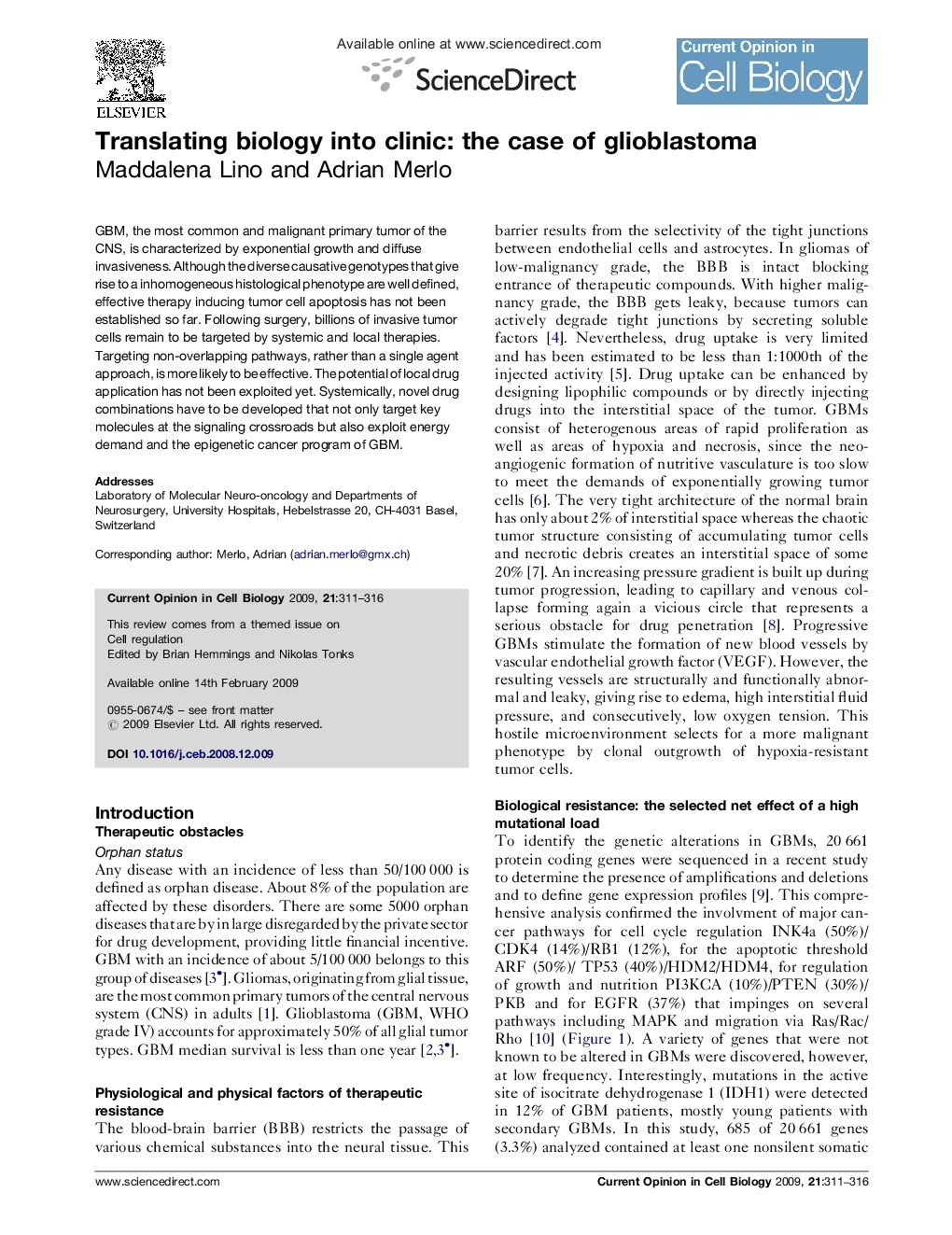| Article ID | Journal | Published Year | Pages | File Type |
|---|---|---|---|---|
| 2169943 | Current Opinion in Cell Biology | 2009 | 6 Pages |
GBM, the most common and malignant primary tumor of the CNS, is characterized by exponential growth and diffuse invasiveness. Although the diverse causative genotypes that give rise to a inhomogeneous histological phenotype are well defined, effective therapy inducing tumor cell apoptosis has not been established so far. Following surgery, billions of invasive tumor cells remain to be targeted by systemic and local therapies. Targeting non-overlapping pathways, rather than a single agent approach, is more likely to be effective. The potential of local drug application has not been exploited yet. Systemically, novel drug combinations have to be developed that not only target key molecules at the signaling crossroads but also exploit energy demand and the epigenetic cancer program of GBM.
